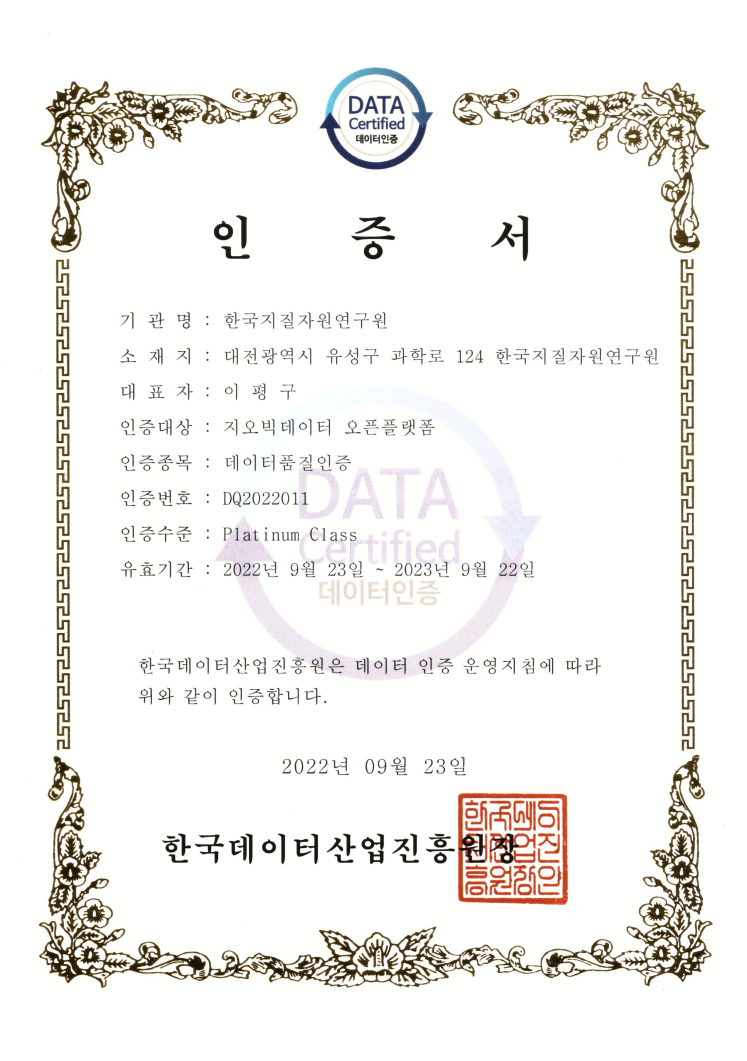경주 오도리 부채꼴 주상절리의 독특한 용암 지형
Data Quality Certification (DQC-V)

| Data type | KIGAM 보고서 |
|---|---|
| Title | 고생물연구 |
| Author | 최성자 |
| Language | KOR |
| Call Number | KR-98-C-05-1998-R |
| Publication Information | 韓國資源硏究所, 1998 |
| Abstract | Since mid-1980s, the paleontological group of the KIGAM has collected and arranged numerous fossil materials to publish a pictorial book. Although fossils not only give a lot of prehistoric information to geologists but also attract non-geologists by its strange shape, up to now any fossil pictorial book has not been published in Korea. Accordingly the paleontological group has planned to publish the pictorial book for the long time, and the first pictorial book of Cenozoic mollusca will be published for the first time in Korea at the end of 1998. Along with the publication of the first volume of the pictorial book, we have prepared the second volume of the pictorial book. The second volume is for Upper Paleozoic fossil plants of Korea. The fossil plants include numerous plant fossil groups, such as Equisetales, Sphenophyllales, Filicales & Pteridospermae, Lycopodiales, Psilotales, Cordaitales and Cycadophyta yielded from the Samcheog Coalfield in Korea. A total of 45 genus and species is photographed and described. All genus and speices in group are arranged in alphbetical order. In the pictorial book of Upper Paleozoic fossil plants, geology of the Samcheog Coal Field, outline of fossil plants, nomencalture of fossils are included. The Cretaceous Puyeo Basin is a NE-SW trending strike-slip basin, filled with alluvial, fluvial, and lacustrine deposits. The basin comprises thick sequence (more than 1.5 km thick) of conglomerate, (gravelly) sandstone, and reddish/greenish gray mudstone. A detailed facies analysis reveals that the sequence can be represented by 9 sedimentary facies which can be organized into 3 facies associations. Facies association (FA) I is characterized by isorganized pebble-to-cobble-grade conglomerate (facies Cc and Cm). These are interpreted as debris flow deposits formed in alluvial fans. FA II comprises massive and stratified (gravelly) sandstone (facies Sm, Sh, St, Sp and Sl) and disorganized pebble-grade conglomerate (facies Cc), which are commonly organized as fining-upward units with erosive bases. These are interpreted as hyperconcentrated flood flows and gravelly or sandy braided stream deposits, respectively. FA III is represented by thick red mudstone (facies Mr) with lenticular (gravelly) sandstone and greenish gray mudstone (facies Md). These are deposited in floodplain and lake/swamp environments. FA I locally occurs in the basin margin and is gradational to FA II and III basinward. Alluvial fan (FA I) and floodplain (FA III) are connected by (ephemeral) braided stream channel network(FA II) |
| Page | 150 p. |
| Keyword | 고생물, 화석, 식물화석, 백악기, 부여분지, 부여, 분지, 층서, 퇴적 |
| Source |
Comments